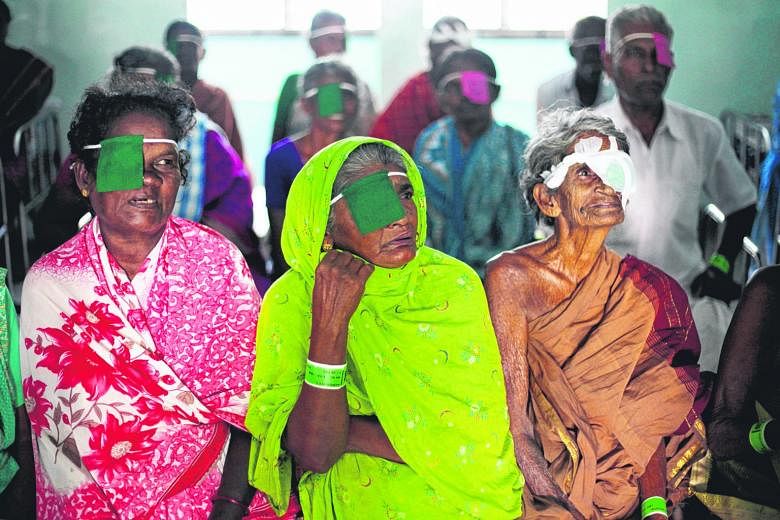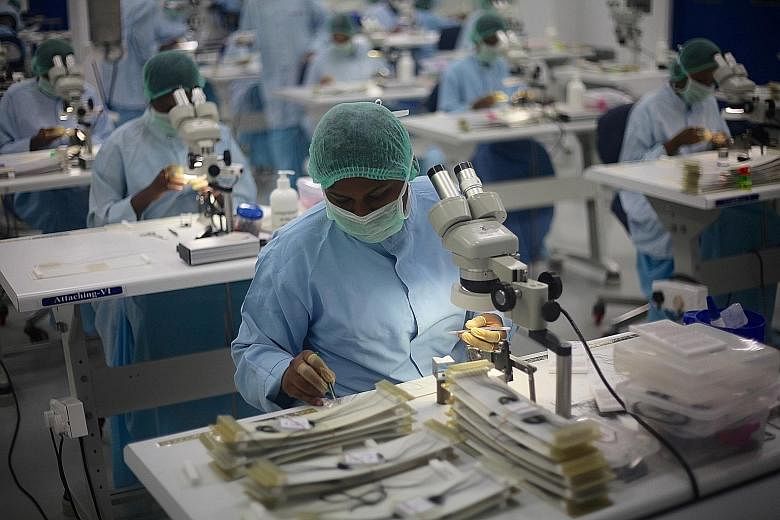CHENNAI • Four decades ago, the Indian ophthalmologist Govindappa Venkataswamy - or Dr V, as he was widely known - wondered: "If McDonald's can do it for hamburgers, why can't we do it for eye care?" He set out to implement standardised, cost-effective processes to eliminate needless blindness.
In 1976, he founded Aravind Eye Hospital, which started as an 11-bed clinic in Madurai. The eye-care model pioneered by Dr V, who died in 2006, has helped grow Aravind into an 11-hospital network across south India's Tamil Nadu state, where it has treated about 45 million patients and performed roughly 5.6 million surgeries.
The bulk of Aravind's patients are treated for cataracts, which gradually steal sight by clouding the eye's lens. Millions of Indians, some as young as 40, are affected by the condition, which is responsible for about 60 per cent of blindness in the country.
But a quick, straightforward procedure in which the affected lens is removed and replaced by a plastic one is all it takes to restore vision.
At the Aravind hospital in Madurai, the hallways are filled with people, including some patients' families seated on the floor.
In the operating rooms, each one is fitted with at least two tables. Immediately after one surgery, usually lasting about 20 minutes, the doctor applies antiseptic gel to his gloves instead of replacing them and swings the state-of-the-art microscope over to the other table where another patient is already in place. Meanwhile, nurses prepare a new patient for the first table.
This assembly-line model allows Aravind's eye surgeons to average about 1,500 cataract operations each per year, compared to around 400 per eye surgeon in the US.
Despite the speed, Aravind prides itself on providing quality care. In fact, its surgeons have less than half the number of complications for procedures as Britain's National Health Service.
The surgery is relatively affordable, largely due to Aravind's manufacturing arm, Aurolab, that produces intraocular lenses and suture needles at below market cost. Cataract surgeries cost 6,200 rupees (S$120) to 70,000 rupees here, compared to some US$3,000 (S$4,000) in the US. Patients can do their surgery at hospitals with more basic recovery facilities for 850 rupees, or nothing for those who cannot afford that.


